Unfortunately, wrongful convictions—when an innocent person is convicted of a crime—are not a rarity in American history. Countless people, a disproportionate amount of whom are Black, have gone to jail or even been executed for crimes that they did not commit. In fact, according to the National Registry of Exonerations, there have been nearly 3,000 exonerations since 1989, and 47% of those exonerees were Black, despite making up only 13% of the U.S. population. Their sentences have added up to more than 25,000 years lost—on average, exonerees spend more than 8 years and 11 months in prison. In this post, we’ll talk about four notable wrongful convictions, showing you where you can find more information in HeinOnline.
1. William Jackson Marion (1872)
One of the earliest recorded wrongful convictions that resulted in the execution of an innocent man was the case of William Jackson Marion.[1]Justin Brooks, Redinocente: The Challenge of Bringing Innocence Work to Latin America, 80 U. CIN. L. REV. 1115 (2012). This article is located in HeinOnline’s Law Journal Library. Marion and his friend, John Cameron, were on their way to Kansas to search for work on the railroad. However, they stopped for the night at Marion’s mother-in-law’s house in Nebraska. Cameron soon disappeared, and Marion was suspected of killing him. A body that was assumed to be Cameron’s was found a year later in a riverbed near where Marion and Cameron had been staying. Convicted of murder and sentenced to death, the case was appealed, with the Nebraska Supreme Court ordering a new trial.[2](1884). Reports of Cases in the Supreme Court of Nebraska, 16, 153-710. This report is located in HeinOnline’s State Reports: A Historical Archive database. However, Marion was again convicted and sentenced to death,[3](1886). Reports of Cases in the Supreme Court of Nebraska, 20, 33-676. This report is located in HeinOnline’s State Reports: A Historical Archive database. and was hanged on March 25, 1887.
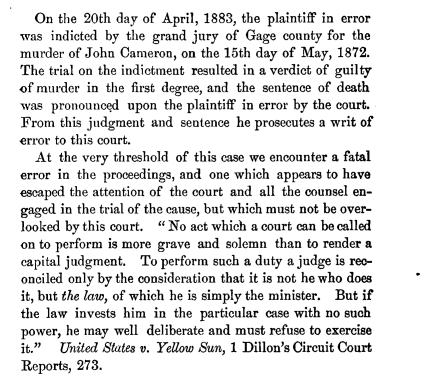
Four years later, John Cameron was found alive. He had traveled to Mexico to avoid marrying a woman who claimed that he was her child’s father. Marion was pardoned by the State of Nebraska on the 100th anniversary of his death.
2. Scottsboro Boys (1931)
One of the most infamous cases of wrongful convictions, and one that would help spark the Civil Rights movement, was the case of the Scottsboro boys. In 1931, nine Black teenagers were arrested after a fight broke out on a train in Alabama. Two white women on the train then accused the boys of raping them—a serious accusation that, especially when used against a Black man during the Jim Crow era, could easily result in his death. Later that year, an all-white and all-male jury decided that all of the boys except the youngest should receive the death penalty.
The case went through a series of appeals. The International Labor Defense of the American Communist Party took charge of defending the boys and launched a national movement to free them, drawing widespread support across America. The case led to two important Supreme Court rulings, the first being in the case of Powell v. Alabama,[4]Ozie Powell, Willie Roberson, Andy Wright, and Olen Montgomery v. Alabama – Haywood Patterson v. Same – Charley Weems and Clarence Norris v. Same, 287 U.S. 45, 76 (1932). This court case is located in HeinOnline’s U.S. Supreme … Continue reading where the court ruled that the Scottsboro boys had been denied right to council, violating their 14th Amendment rights.
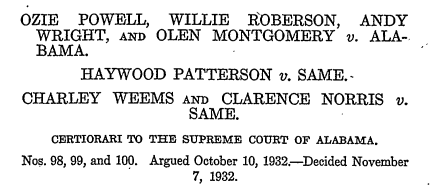
However, when the case went back through the Alabama courts, even though one of the women rescinded her allegation against the boys, they were still sentenced to death. In 1935, the Supreme Court once again overturned the verdict in Norris v. Alabama,[5]Norris v. Alabama, 294 U.S. 587, 599 (1935). This court case is located in HeinOnline’s U.S. Supreme Court Library. which stated that the trials had been unfair because there were no Black men on the jury. This case would eventually help lead to the integration of juries.
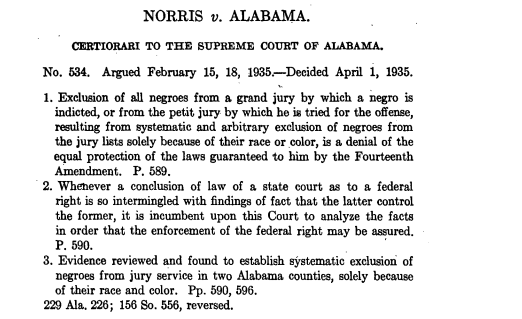
After a number of subsequent trials, rape charges were dropped against four of the boys and they were released. As for the other five, they were given significant prison sentences—four were eventually released on parole, and pardons were eventually granted.
There are several articles about this case located in HeinOnline’s Law Journal Library, including titles such as:
- The Scottsboro Boys Trials and Judge Horton’s Ex Parte Meeting: History’s Verdict
- The Central Park Five, the Scottsboro Boys, and the Myth of the Bestial Black Man
- Race, Crime, and Punishment in the Twentieth and Twenty-First Centuries
- The First Scottsboro Trials: A Legal Lynching
3. The Central Park Five (1989)
The case of the Central Park Five is yet another infamous one in American history and one that again illuminates the pervasiveness of racial discrimination in our criminal justice system. On April 20, 1989, Trisha Meili was found barely alive in Central Park in New York City. She had been brutally beaten and raped while on a jog the previous night. Five young Black and Latino teens were convicted of the crime and became known as the Central Park Five.
Despite a lack of evidence that the boys committed this crime, the accusations resulted in a media tidal wave in which the boys were frequently described as savage, a “wolf pack,”[6]N. Jeremi Duru, The Central Park Five, the Scottsboro Boys, and the Myth of the Bestial Black Man, 25 CARDOZO L. REV. 1315 (2004). This article is located in HeinOnline’s Law Journal Library. and bloodthirsty. It was reported that on that same night that Meili was attacked, there were several other crimes committed in the area by a group of about 30 teens, including the five accused, who then allegedly attacked Meili. Donald Trump took out ads in several prominent newspapers,[7]Mary Anne Franks, Unpoliced, 53 NEW ENG. L. REV. 217 (2019). This article is located in HeinOnline’s Law Journal Library. including The New York Times, calling for the Central Park Five to receive the death penalty.
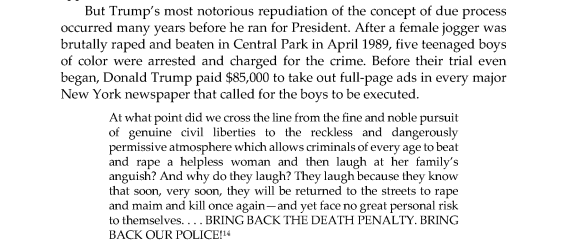
The boys initially pleaded guilty but then testified that they had been coerced by the police into doing so. There were no witnesses or DNA evidence that proved the boys’ guilt, but they were all found guilty on several charges. Each spent between six and 13 years in prison, until their charges were reversed[8]People v. Wise, 752 N.Y.S.2d 837 (NY 2002). This court case is located in Fastcase. after convicted serial rapist Matias Reyes confessed to the attack in 2002. The Central Park Five were later granted a settlement of $41 million from New York City. Several of these men now work in criminal justice reform and are public speakers and advocates.
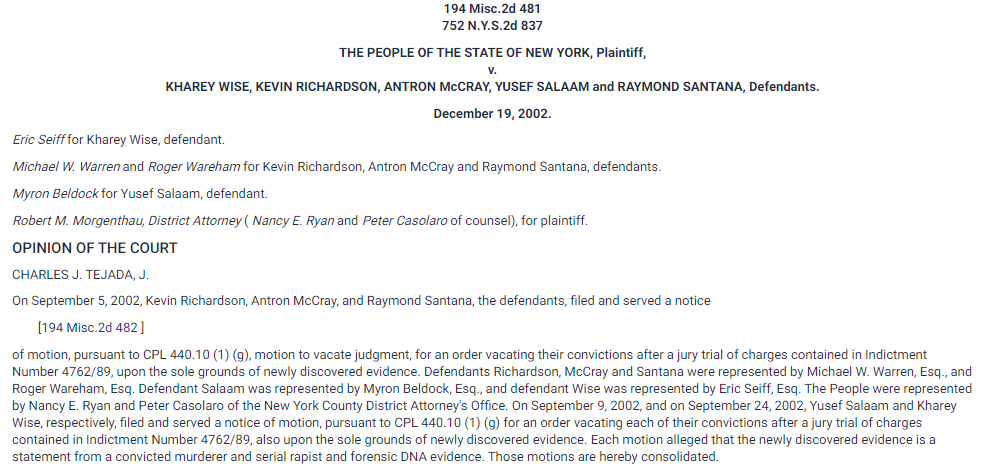
You can also read through these related journal articles in our Law Journal Library:
- From the Central Park 5 to the Exonerated 5: Can It Happen Again?
- Another Look at the Central Park Five: What Civilian Courts Can Learn from the Military
- Transforming the Central Park jogger into the Central Park Five: Shifting narratives of innocence and changing media discourse in the attack on the Central Park jogger, 1989-2014
- Analyzing Wrongful Convictions beyond the Traditional Canonical List of Errors, for Enduring Structural and Sociological Attributes, (Juveniles, Racism, Adversary System, Policing Policies)
4. Leon Brown and Henry McCollum (1983)
In 1983, half-brothers Leon Brown and Henry McCollum, both Black and intellectually disabled, were convicted of the rape and murder of an 11-year-old girl in Red Springs, NC.[9]STATE of North Carolina v. Henry Lee McCOLLUM, Leon Brown, 321 N.C. 557 (NC 1988). This court case is located in Fastcase. At the time, McCollum was 19, Brown 15. A local high schooler accused the half-brothers of the crime due to a rumor circling around town. Police coerced confessions out of both boys, who weren’t even able to read the confession documents officers wrote up for them and had them sign. The next year, they were both given the death penalty.

A few years later, in 1991, Brown’s sentence was reduced to life in prison. However, McCollum’s previous confession was used against him and he was again given the death penalty, even though both men maintained their innocence. It wasn’t until 2015, when DNA evidence proved that the young girl was actually murdered by a convicted killer, that Brown and McCollum were finally released. They proceeded to sue law enforcement and the town of Red Springs, and in a federal case in 2021,[10]This court case is located in Fastcase. they were awarded a total of $75 million in compensation.
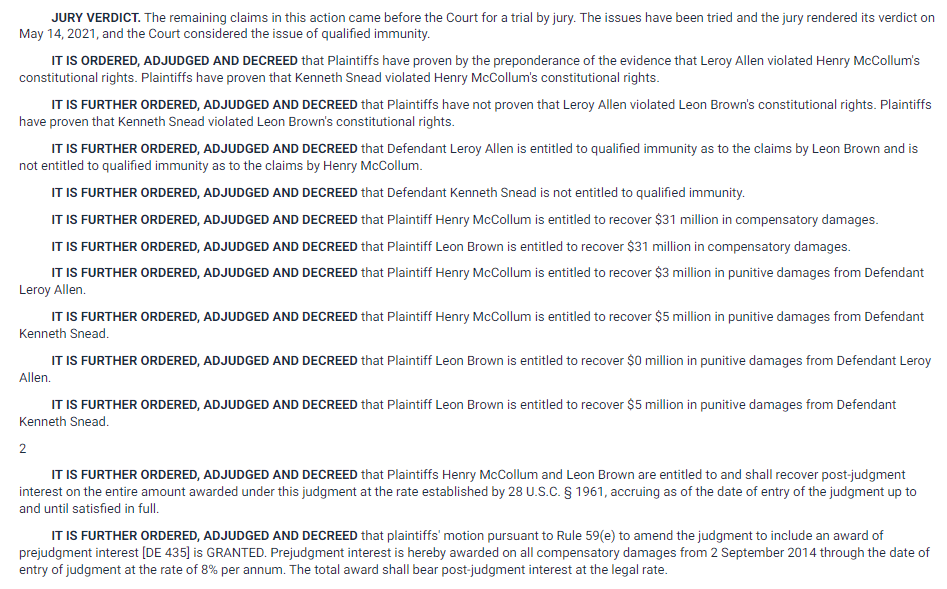
Further Your Research
Interested in learning more about wrongful convictions and the criminal justice system? HeinOnline’s Criminal Justice & Criminology database provides a historical overview of these ever-changing disciplines, complete with congressional hearings, government reports, U.S. Attorney General publications, and an extensive collection of related books and periodicals.
Stay Updated on the Latest
When you subscribe to the HeinOnline Blog, you can ensure you won’t be wrongfully convicted of not having the latest information from HeinOnline at your fingertips. Follow along for posts that dive into history, outline content updates, and so much more!
HeinOnline Sources[+]
| ↑1 | Justin Brooks, Redinocente: The Challenge of Bringing Innocence Work to Latin America, 80 U. CIN. L. REV. 1115 (2012). This article is located in HeinOnline’s Law Journal Library. |
|---|---|
| ↑2 | (1884). Reports of Cases in the Supreme Court of Nebraska, 16, 153-710. This report is located in HeinOnline’s State Reports: A Historical Archive database. |
| ↑3 | (1886). Reports of Cases in the Supreme Court of Nebraska, 20, 33-676. This report is located in HeinOnline’s State Reports: A Historical Archive database. |
| ↑4 | Ozie Powell, Willie Roberson, Andy Wright, and Olen Montgomery v. Alabama – Haywood Patterson v. Same – Charley Weems and Clarence Norris v. Same, 287 U.S. 45, 76 (1932). This court case is located in HeinOnline’s U.S. Supreme Court Library. |
| ↑5 | Norris v. Alabama, 294 U.S. 587, 599 (1935). This court case is located in HeinOnline’s U.S. Supreme Court Library. |
| ↑6 | N. Jeremi Duru, The Central Park Five, the Scottsboro Boys, and the Myth of the Bestial Black Man, 25 CARDOZO L. REV. 1315 (2004). This article is located in HeinOnline’s Law Journal Library. |
| ↑7 | Mary Anne Franks, Unpoliced, 53 NEW ENG. L. REV. 217 (2019). This article is located in HeinOnline’s Law Journal Library. |
| ↑8 | People v. Wise, 752 N.Y.S.2d 837 (NY 2002). This court case is located in Fastcase. |
| ↑9 | STATE of North Carolina v. Henry Lee McCOLLUM, Leon Brown, 321 N.C. 557 (NC 1988). This court case is located in Fastcase. |
| ↑10 | This court case is located in Fastcase. |



